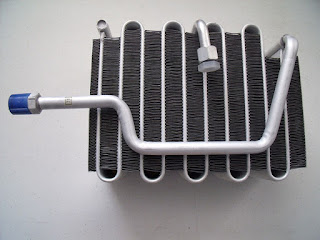

Picture show a Rotary Vane in left and Rotary Scroll in right of the Rotary Type Compressor.
Rotary compressor is becoming more and more popular in car a/c system because of the light weight in design, less moving parts compare to reciprocating compressor, and the most importance is the volume it can handle at a time despite its small size is very large compare to reciprocating compressor.
Rotary compressor need less maintenance as long as there is enough oil for lubrication. Also, rotary compressor have less size and weight when compare to a reciprocating compressor. Rotary compressor have a variable volume which it can process at a time, not like a reciprocating that have a fixed volume.
Variable volume make car manufacturer hard to calculate the size of condenser and evaporator, and also the quantity of refrigerant needed to be used in their car. Car manufacturer need to run a long testing on their car to make sure the cooling is enough which will make the production cost higher.
There is several reason why rotary compressor is gaining it popularity. First is, the compressor can handle a large volume of refrigerant which will make the use of refrigerant become less compare to reciprocating compressor. Second, the less moving parts will make the sound and noise produced when the a/c is operation become less when compare to a reciprocating compressor. And final is the lightweight and small size of rotary compressor will make the car lighter and save more space that will benefit in fuel economic.
So this is what i have so far with this 3 kind of compressor. I will talk in detail in future for each compressor. Stay tune for more on.




























